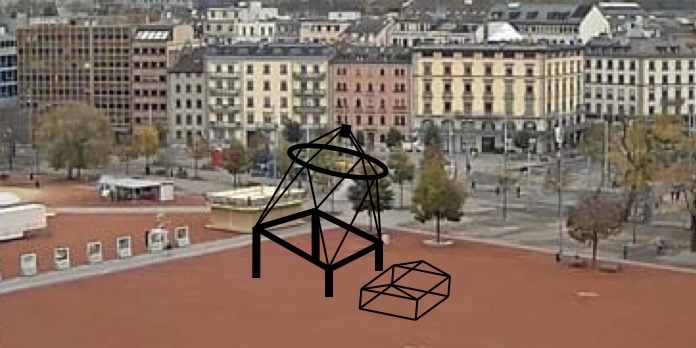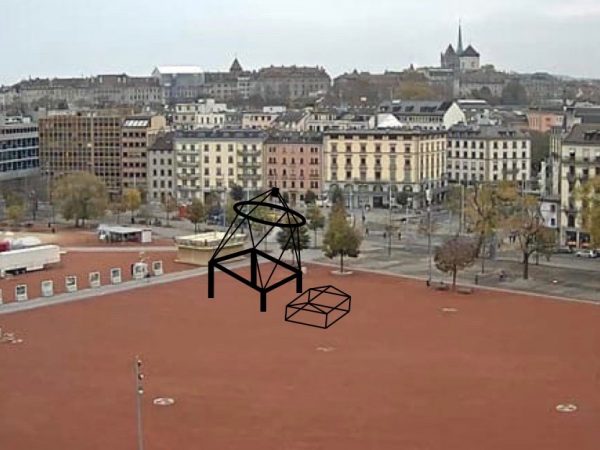More than 1800 planetologists expected in Geneva

While the EPSC (European Planetary Science Congress) and the meeting of the Division of Planetary Science (DPS, USA) are planetology congresses that take place every year on their respective continents, the conference that brings together the two entities, the EPSC-DPS joint meeting, takes place every four years alternately in the USA and Europe. This year, it will be held in Geneva, from the 15th to 20th of September, organized by the NCCR PlanetS and the International Space Science Institute in Bern.
The previous joint meeting in Europe was held in Nantes in 2011 whit more than 1500 participants. We expect to welcome more than 1800 planet enthusiasts this year in Geneva. “Geneva has excellent assets to promote” explains Stéphane Udry, co-director of PlanetS, and a strong supporter of the city’s candidature, “We can mention here Geneva’s geographical location in the middle of Europe, the proximity of the airport, the availability of a large, modern, and well-equipped conference centre (CICG), and last but not least, the sponsorship from the Swiss Confederation and the State of Geneva. It has to be emphasized here as well the fantastic help provided by the Geneva convention bureau”. PlanetS partly finances the Local Organisation Committee (LOC), chaired by Stéphane Udry and co-chaired by Ravit Helled from the University of Zürich, and which is responsible for part of the local organisation (social events, outreach activities, contact with the media, etc).
Virtual visit https://www.cicg.ch/en
At the beginning of August, already more than 1000 planetary specialists have registered to participate to the congress. “An excellent number” according to Mario Ebel of Copernicus, the company in charge of the logistics organization, “there is more than a month left and I know from experience that many participants register at the last moment”. The expected large attendance is confirmed by the unprecedented number of abstracts, over 2’000, submitted to the Scientific Organizing Committee. The program covers the full diversity of topics related to planetary science divided into 5 groups (terrestrial planets, planetary systems, instrumentation, and technology, small bodies, exoplanets, and origins), and spread over 59 sessions.
Several social events are planned. One of them invites participants to gather around a table. An event that will take place at the Halle de l’île, on the banks of the Rhône in the heart of Geneva. It will be followed by an Open mic session where artists among the participants will perform in front of the public (music, singing, poetry, everything possible). “While the dinner is reserved for registered participants, the show will be open to everyone”, says Baptiste Lavie of the LOC, “there will be space for everyone as the place is able to accommodate for up to 800 people”.

Les Halles de l’Ile (Image Genève tourisme)
Two other events will also be open to the Geneva public. This is the case for the award of the Sagan Prize for outreach and communication in science by members of the DPS. This year the prize is awarded to Carrie Nugent, a specialist of near-Earth objects. She will give for the occasion a public lecture in English entitled Asteroid impacts. The conference will be held at the Uni-Dufour building in Geneva, on Thursday September 19 (18h30, time to be confirmed).
Just in front of Uni Dufour, on the Plaine de Plainpalais, an exhibition will present to the public modern developments in the search for planets around other stars, in particular displaying two emblematic instruments used by Swiss astronomers in planetary science research. On the one hand, we will install a model of the structure of the Very Large Telescope in Chile, at a 1 :1 scale, allowing everyone to directly experience the size of today’s world leading facilities in astronomy. On the other hand, also in real size, a reproduction of CHEOPS, the first satellite developed for the European Space Agency under Swiss leadership. The exhibition will open for the public from September 15 to 20, from 8am to 8pm.

The VLT on the Plaine de Plainpalais. (Image University of Geneva)
Local and international media will be present for the congress. They will play an important role in the relations between the public and scientists. A press conference will be held at the opening of the congress on Monday 16 (10:30 am, to be confirmed), with the presence of the organizers and the main actors of the CHEOPS mission. Throughout the week, regular press briefings will be held to present daily highlights.
The climate in September in Geneva is generally mild and sunny and should allow participants to discover the city, its parks and walkways, its terraces, and why not its beaches!
Categories: Internal Newsletter, News, Uncategorized
